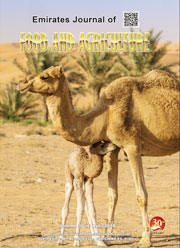CULTURAL, PHYSIOLOGICAL COMPARISON AND FUNGICIDAL SENSITIVITY BETWEENTWO ISOLATES OF BOTRYTIS CINEREA AND STEMPHYLIUM BOTRYOSUM
DOI:
https://doi.org/10.9755/ejfa.v23i2.6346Keywords:
Chickpea, Fungicides, Lentil, Variability and Trichoderma harzianumAbstract
Cultural and physiological comparison between Botrytis cinerea and Stemphylium botryosum causing gray mold in chickpea and stemphylium blight in lentil were studied. Both isolates differed significantly on the basis of their colony diameter, color, texture, shape, margin, conidia dimension, spore production and sensitivity to fungicides. The maximal colony diameter (80.16 mm) and spore (2.7×104 ) mL-1 was found in chickpea dextrose agar (CDA) and lentil dextrose agar (LDA) respectively, for Botrytis cinerea. Stemphylium botryosum maximal colony diameter (57.00 mm) and spore (1.7×104 ) mL-1 was obtained from LDA. The optimum temperature and pH for Botrytis cinerea and Stemphylium botryosum growth was 20°C and 25°C; pH 4.5 and 5.5, respectively. The conidia size were found to be 11.74×8.12 µm for B. cinerea and 16.27×9.07 µm for S. botryosum. Rovral 50WP from the iprodione group was found to be the most effective chemical fungicide to inhibit the radial mycelial growth of both isolates. Trichoderma harzianum was found to be an effective antagonist against both pathogens.










 .
. 